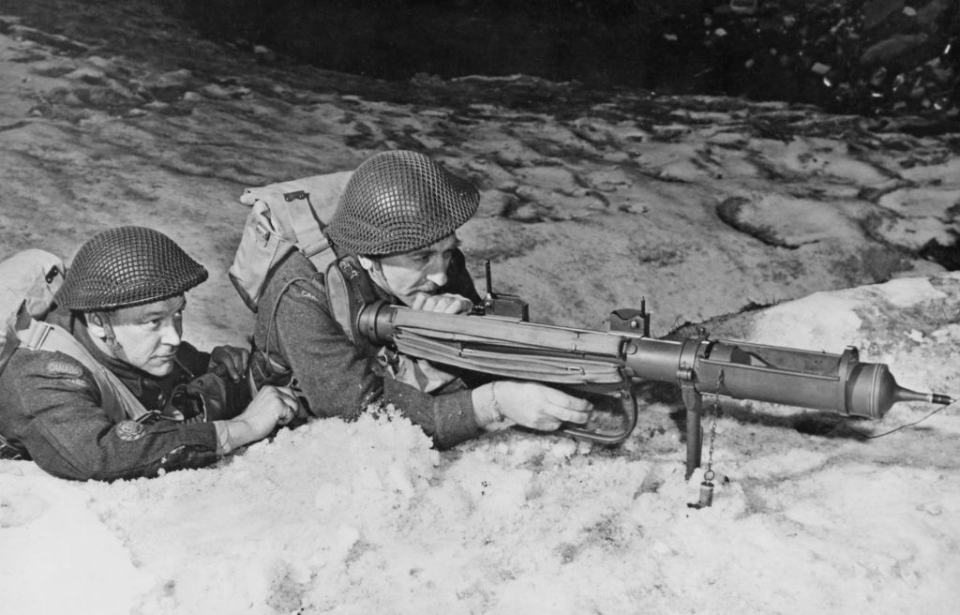By 1942, the Second World War had dragged on for three years. The British had seen a good deal of combat in various theaters, frequently coming up against the Germans and their tanks. While their infantry were well-equipped with different anti-tank weapons, they weren’t dealing the kind of damage needed.
Initially, the British used the Boys anti-tank rifle and the Grenade, Rifle No. 68 / Anti-Tank (AT) as their primary anti-tank weapons, but quickly discovered neither was particularly effective. In fact, when officers with the British Eighth Army analyzed Operation Crusader in North Africa, they couldn’t find a single documented case where the Boys rifle was successful against a German tank.
The British identified the weakness and knew they needed to find a new weapon to act as their primary anti-tank gun. This led to the creation of the Projector, Infantry, Anti-Tank Mk 1 – more commonly know as the PIAT.
Initial development and design of the PIAT
Of the two British weapons most commonly used against tanks in the early years of the war, the Boys anti-tank rifle was considered the best. It was a powerful rifle that could penetrate 25 mm of tank armor from half a kilometer away. However, after being used in France, it quickly became clear it couldn’t keep up with enemy tank armor that was just getting heavier.
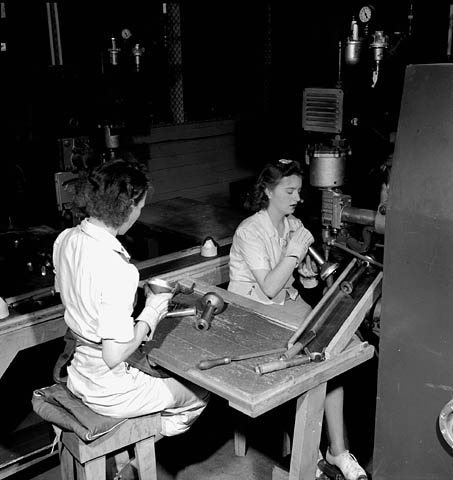
The predecessor to the PIAT was initially designed as a spigot mortar for use by the British Home Guard, in case of a German invasion. Lt. Col. Stewart Blacker of the Royal Artillery created the design, which went through many iterations and rejections by the War Office, before thinking up the Blacker Bombard. He soon learned of shaped charges and modified the weapon to create the Baby Bombard.
Innovative ammunition created the PIAT
The improvement of the design was eventually handed over to Maj. Millis Jefferis, a sapper with the British Army and the commander of Ministry of Defence 1 (MD1), the secret British weapon development facility nicknamed “Churchill’s Toyshop.” Jefferis rebuilt the prototype to create what would become the PIAT.
Production began in August 1942 and the weapon was in use the following year.
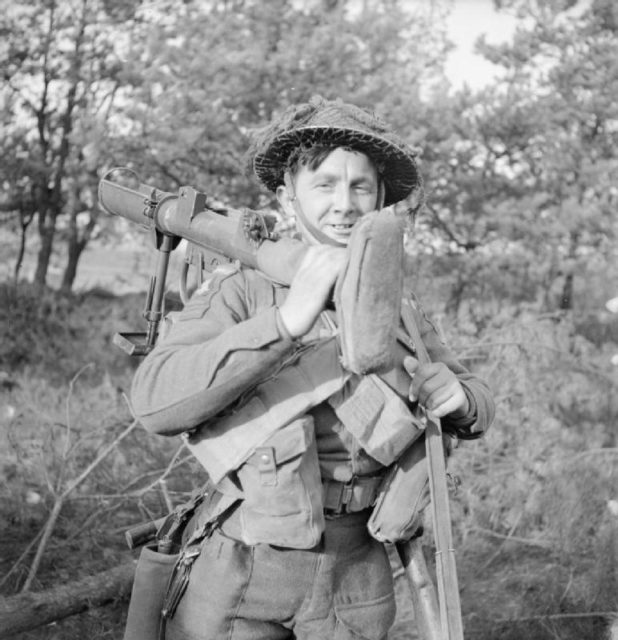
What’s interesting about the PIAT is that the charge moved extremely slowly – only 83 meters per second – as the weapon fired a hollow cone-shaped charge launched by a jet of molten metal. This meant the range and velocity had no impact on performance. The energy from the explosion was concentrated in the point of the charge, allowing it to easily pierce through a tank, despite its slow speed.
Working with a stiff spring
While the weapon was considered very effective, it had a few drawbacks. The primary difficulty soldiers faced with the PIAT was that the compressed spring used to cock it was extremely stiff and hard to manage, yet the process had to be done manually before the first shot was fired.
It was designed, however, so the recoil from that first shot would re-cock the PIAT, meaning the user wouldn’t have to. This didn’t always happen, as there was a lapse between the trigger pull and the round ejection. This often led to those who were inexperienced releasing their grip too early, causing the weapon to not re-cock. It wasn’t a matter of simply re-cocking the gun either, as this was difficult to do without standing up.
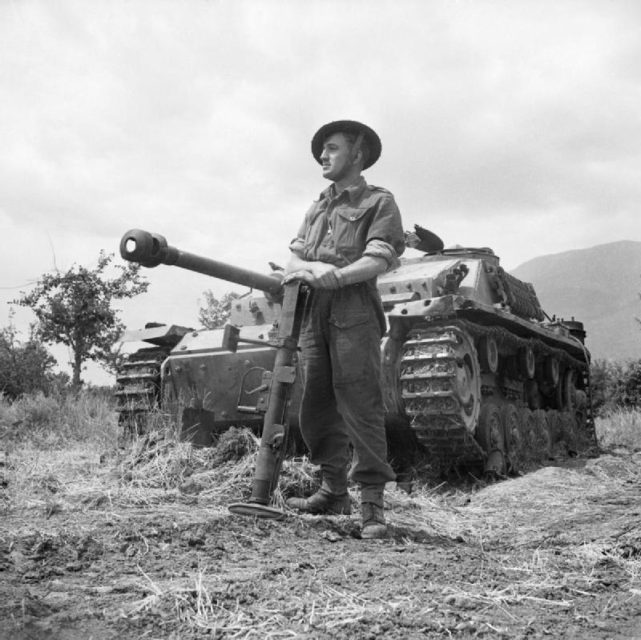
Due to the issues with the stiff spring, soldiers were trained to keep the PIAT cocked before expected use and to always have it cocked, but unloaded, when in action. Only when it didn’t automatically re-cock on the recoil did the user actually re-cock during combat.
Other issues with the PIAT
While the stiff spring used for cocking the weapon was its primary design flaw, the PIAT had other issues, as well. The weapon itself and its ammunition were very heavy, with the latter alone weighing between 14.4 and 15 kg. While it could be operated by one person, it generally wasn’t, with a second typically carrying and loading the ammunition.
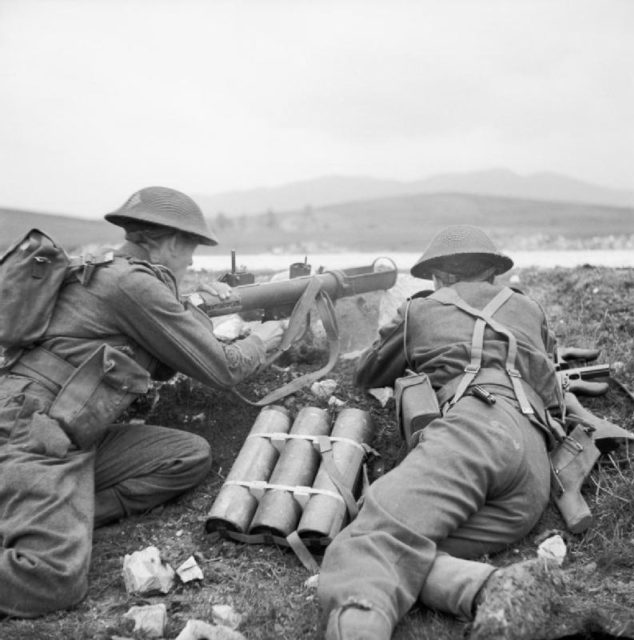
One of the other main issues was that the PIAT had an exceedingly forceful kickback. One British soldier who used the weapon in Italy shot at a German Panther tank while standing with it on his shoulder. Although he succeeded in his shot, the recoil was so strong that he was completed knocked over.
Many soldiers wholeheartedly believed the recoil could break one’s shoulder.
Notable use during the Second World War
The PIAT was used by the British and other Commonwealth forces during the final years of the Second World War. It was first introduced during the Tunisia Campaign and was later used in the battles of Normandy, Arnhem, Ortona and Villers-Bocage, as well as during operations Epsom and Perch. Polish resistance fighters also used it during the Warsaw Uprising.
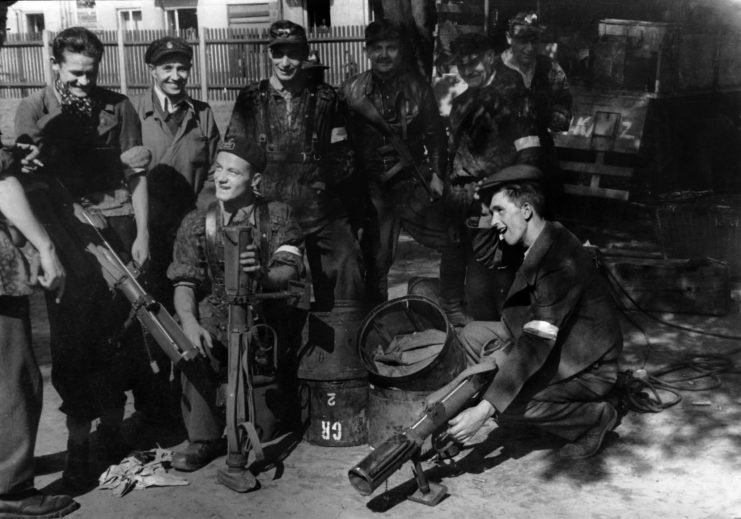
More from us: The M320 Grenade Launcher is a Serious Step-Up From the M203
By the end of the war, there were roughly six Victoria Crosses awarded for PIAT-related actions, along with many other medals. Among the recipients were Maj. Robert Cain, who destroyed several German vehicles in Oosterbeek; Pvt. Ernest “Smokey” Smith, who knocked out a Panther tank; and Rifleman Ganju Lama, who single-handedly defeated several Japanese tanks during the Battle of Imphal.
